
Champagne can indeed be a low-carb beverage choice, particularly in its drier varieties. Brut Nature contains minimal carbohydrates at 0 to 0.5 grams per serving, while Extra Brut and Brut varieties contain 1 to 1.5 grams per glass. The sugar content increases considerably in sweeter versions like Demi-Sec, which contains 6 to 8 grams of carbs. For those following a low-carb or keto diet, selecting the right type of Champagne makes all the difference in maintaining dietary goals.
Key Takeaways
- Most Champagne varieties, especially Brut Nature and Extra Brut, contain minimal carbs with only 0-1 grams per 5-ounce serving.
- Drier Champagne styles like Brut are keto-friendly, making them better choices than beer which contains 13g carbs per serving.
- The final carbohydrate content depends on dosage levels, with sweeter varieties like Demi-Sec containing 6-8 grams per serving.
- Champagne's carb content varies by style, ranging from nearly zero in Brut Nature to higher amounts in sweeter varieties.
- For low-carb diets, stick to Brut Nature, Extra Brut, or standard Brut Champagne to minimize carbohydrate intake.
Understanding Champagne Production
Champagne's distinctive production process involves several meticulously controlled stages that directly influence its carbohydrate content. Under strict Appellation d'Origine Contrôlée regulations, authentic Champagne undergoes two vital fermentation phases, transforming grape sugars into alcohol and creating its signature effervescence.
The journey to potentially low carb wine begins with careful grape pressing and initial fermentation, followed by a secondary fermentation in the bottle.
The dosage stage proves particularly significant for those seeking lower carbohydrates, as this final addition of sugar solution determines the ultimate carb content.
While traditional Champagne production requires aging for at least 15 months, this maturation process affects flavor complexity rather than carbohydrate levels, making the dosage stage the key factor in determining whether a Champagne qualifies as low carb.
The Science Behind Champagne's Carb Content
The carbohydrate content in Champagne emerges from a precise interplay of chemistry and winemaking decisions during production.
During the fermentation process, winemakers carefully control residual sugar levels, which directly influence the final carb content of different Champagne varieties.
The dosage stage plays an essential role in determining carbohydrate count, with varying amounts of sugar added after secondary fermentation.
During final production, the crucial dosage stage shapes Champagne's carbohydrate levels through precise sugar additions post-fermentation.
Brut Nature Champagne, containing minimal dosage, offers the lowest carbs at 0 to 0.5 grams per five-ounce serving, making it particularly suitable for low-carb diets.
Extra Brut follows with approximately 1 gram, while standard Brut contains 1 to 1.5 grams.
Sweeter varieties like Demi-Sec demonstrate markedly higher carbohydrate levels, reaching 6 to 8 grams per serving due to increased sugar addition during production.
Types of Champagne and Their Sugar Levels
Understanding different types of Champagne and their corresponding sugar levels helps consumers make informed choices about their carbohydrate intake while enjoying this celebrated sparkling wine. The sugar levels in various types of champagne directly influence their carb content per serving, with notable variations across styles.
| Type | Sugar Level | Carbs per 5oz |
|---|---|---|
| Brut Nature | Minimal | <1g |
| Extra Brut | Very Low | 1g |
| Brut Champagne | Low | 1-1.5g |
| Extra Dry | Medium | 2-2.5g |
| Demi-Sec | High | 6-8g |
For those following low-carb diets, Brut Nature and Extra Brut options provide the lowest carbohydrate content. While Brut Champagne remains a popular choice with moderate carbs, Demi-Sec varieties contain considerably higher sugar levels, making them less suitable for carb-conscious consumers.
Brut vs. Sweet: Making the Right Choice
When selecting Champagne for a low-carb lifestyle, understanding the sweetness scale becomes essential, with Brut Nature and Extra Brut representing the driest options at less than 1 gram of carbs per serving.
The traditional Brut category offers a reliable choice for carb-conscious consumers, containing under 2 grams per 5-ounce pour, while sweeter varieties like Doux and Demi-sec should be avoided due to their higher sugar content exceeding 7.5 grams per serving.
For those strictly monitoring their carbohydrate intake, focusing on Brut Nature and Extra Brut selections guarantees the lowest possible sugar content while maintaining the sophisticated experience of Champagne consumption.
Sweetness Scale Breakdown
Steering through champagne's sweetness scale proves essential for those monitoring their carbohydrate intake, as different classifications correspond to varying sugar levels.
The spectrum ranges from the ultra-dry Brut Nature to the sweeter Demi-Sec, with each category representing distinct carb content levels.
- Brut Nature: Less than 1g carbs per 5-ounce serving, ideal for strict low-carb diets
- Extra Brut: Approximately 1g carbs, offering a balanced dry option
- Brut: 1 to 1.5g carbs, representing the most popular choice
- Extra Dry: 2 to 2.5g carbs, slightly sweeter profile
- Demi-Sec: 6 to 8g carbs, considerably higher sugar content
Understanding these classifications enables informed decisions for those following low-carb lifestyles, with Brut and drier varieties emerging as the most suitable options for carb-conscious consumers.
Choosing Best Brut Options
Selecting the right brut champagne proves essential for maintaining a low-carb lifestyle, as the nuances between different brut varieties can greatly impact overall carbohydrate consumption.
When examining options, Extra Brut emerges as the best choice, containing approximately 1 gram or fewer of carbs per 5-ounce serving, while standard Brut offers a still-modest 2 grams per serving.
To make the most informed selection, consumers should specifically look for labels marked "Brut," "Extra Brut," or "Brut Nature." These designations indicate minimal sugar addition during the dosage stage of production, resulting in lower carbohydrate content.
Champagne's Place in a Keto Diet
For individuals following a ketogenic lifestyle, champagne can be a surprisingly suitable alcoholic beverage choice, particularly when selecting varieties like Brut Nature and Extra Brut.
These dry, low-carb wines contain minimal residual sugar content, typically ranging from 0 to 1 gram of carbs per serving, making them compatible with keto dietary restrictions.
- Brut Nature contains virtually zero carbs, ideal for strict keto adherence
- Extra Brut offers 0-1 gram of carbs per 5-ounce serving
- Standard Brut varieties contain 1-1.5 grams of carbs per glass
- Secondary fermentation process naturally reduces sugar content
- Moderation remains essential to maintain ketosis despite low carb content
Incorporating champagne into a keto diet should be done with an understanding of its potential impact on insulin sensitivity, as maintaining stable blood sugar levels is crucial for ketosis. The key to incorporating champagne into a keto diet lies in selecting drier varieties and practicing mindful consumption to avoid disrupting ketosis through accumulated carbohydrate intake.
Comparing Champagne to Other Alcoholic Beverages
When comparing champagne's carbohydrate content to other alcoholic beverages, Brut and Extra Brut varieties emerge as remarkably low-carb options, containing less than 2.5 grams per serving.
Traditional beer stands in stark contrast with approximately 13 grams of carbs per serving, while sweet cocktails often exceed 15 grams, making champagne a considerably more carb-conscious choice.
Hard liquors contain zero carbs per serving, positioning them as the lowest-carb option, though champagne remains a favorable alternative for those seeking a celebratory drink while managing their carbohydrate intake.
Carb Content Comparison Chart
A thorough comparison of alcoholic beverages reveals Champagne as one of the more carb-conscious choices available, particularly in its driest forms.
When examining carbs per serving across different drinks, sparkling wine enthusiasts following a low-carb diet will appreciate Champagne's modest carbohydrate content, especially compared to other popular options.
- Extra Brut Champagne: 1g carbs per 5 oz
- Brut Champagne: 2g carbs per 5 oz
- Regular Champagne: 3-4g carbs per 5 oz
- Dry wines (Sauvignon Blanc, Cabernet): 3g carbs per 5 oz
- Regular Beer: 13g carbs per 12 oz
These figures demonstrate that Champagne, particularly varieties with minimal added sugars, stands out as a favorable option for those monitoring their carbohydrate intake while still enjoying alcoholic beverages.
Popular Drinks Vs Champagne
The broad spectrum of alcoholic beverages available today presents varying levels of carbohydrate content, with Champagne standing out as a particularly mindful choice.
When compared to other popular drinks, Champagne, especially Brut varieties, contains only 3 to 4 grams of carbs per 5-ounce serving, notably less than a 12-ounce beer's 13 grams.
While hard liquors like vodka and whiskey contain zero carbs per serving, they often end up in mixed drinks that can considerably increase carbohydrate intake.
Dry wines offer similar low carb counts to Champagne, but sweet cocktails tell a different story. A mimosa, despite its Champagne base, packs 11.3 grams of carbs per serving, while margaritas can reach up to 36 grams, making Champagne a more carb-conscious choice for celebratory occasions.
The Best Low-Carb Champagne Options
Selecting low-carb Champagne requires understanding the different classifications and their respective sugar content.
For those following a Keto Diet or seeking low-carb options, dry Champagne varieties offer excellent choices with minimal carbs per serving.
- Brut Nature Champagne contains less than 1g of carbs per 5-ounce serving, making it the ultimate low-carb choice.
- Extra Brut Champagne follows closely with approximately 1g of carbs per serving.
- Standard Brut Champagne provides 1-1.5g of carbs per serving.
- Extra Dry Champagne offers 2-2.5g of carbs per serving.
- Demi-Sec Champagne contains 6-8g of carbs per serving.
These varying levels of carbohydrates allow consumers to choose according to their dietary needs, with Brut Nature and Extra Brut being particularly suitable for strict low-carb diets.
Hidden Carbs in Champagne Cocktails
While pure champagne can be a suitable choice for low-carb dieters, champagne cocktails often harbor considerable hidden carbohydrates that can derail dietary goals. Popular drinks like mimosas can contain up to 11.3 grams of net carbs per serving, primarily due to the addition of fruit juice. The presence of added sugars in cocktails such as bellinis and kir royales further increases their carbohydrate content, making them less compatible with a low-carb diet. The carbohydrate content varies greatly based on mixers and sweeteners used. Even when starting with low-carb champagne varieties, the addition of high-carb mixers like tonic water or flavored syrups can quickly exceed acceptable carbohydrate limits. For those seeking low-carb options, spirits such as vodka offer zero carbs, allowing for more diet-friendly cocktail variations. To maintain dietary goals, it's essential to carefully consider ingredients and portion sizes when consuming champagne cocktails.
Health Benefits of Moderate Champagne Consumption
Beyond its role in celebrations, moderate champagne consumption offers several notable health benefits when incorporated into a balanced lifestyle.
Research indicates that champagne's unique composition contributes to heart health through its rich antioxidant content, particularly polyphenols, which help reduce inflammation and improve blood circulation.
- Contains minimal carbohydrates (0-2g per serving), making it suitable for low-carb diets
- Rich in antioxidants that combat inflammation and support cardiovascular function
- Associated with lower risk of heart disease through improved cholesterol levels
- Natural carbonation may help control calorie intake by promoting satiety
- Contributes to positive psychological state and enhanced social experiences when consumed responsibly
Additionally, the keto diet, which is characterized by a low-carb intake, has been shown to reduce cardiovascular disease risk through significant reductions in triglycerides and other heart health markers. The combination of these benefits, coupled with champagne's relatively low carbohydrate content, makes it a potentially favorable choice for those seeking to balance health considerations with social enjoyment.
Tips for Enjoying Champagne While Staying Low-Carb
Maintaining a low-carb lifestyle doesn't mean giving up the pleasures of champagne, as strategic choices can help individuals enjoy this celebrated beverage while adhering to their dietary goals.
To choose low-carb options, opt for Brut Nature or Extra Brut types of champagne, which contain minimal carbs per serving, typically under 1 gram per 5-ounce glass.
Understanding serving size is essential when consuming sparkling wines on a low-carb diet. While drier varieties are preferable, sweet wine options like Doux or Demi-Sec should be avoided due to their higher sugar content.
Practice moderation and be mindful of cocktail additions that could increase carbohydrate content. By following these guidelines, champagne enthusiasts can maintain their low-carb commitments while still savoring their favorite bubbly beverage.
For those following a ketogenic diet, staying hydrated and maintaining electrolyte balance is crucial to prevent symptoms like the keto flu that can occur during the initial adjustment phase.
Reading Champagne Labels for Carb Content
Understanding champagne labels proves vital for those monitoring their carbohydrate intake, as the terminology directly indicates sugar and carb content. The sweetness level correlates directly with carbohydrate content, making label reading essential for informed decisions.
- Brut Nature contains the lowest carbs, with less than 1g per 5-ounce serving.
- Extra Brut follows closely with approximately 1g of carbs per serving.
- Brut offers a moderate option at 1 to 1.5g of carbs per serving.
- Extra Dry, despite its name, contains higher carbs at 2 to 2.5g per serving.
- Residual sugar content listed on labels provides precise sweetness information.
When reading champagne labels, focus on these designated terms and check the residual sugar content to accurately determine carbohydrate levels, ensuring alignment with dietary goals.
Serving Sizes and Carb Management
Tracking serving sizes plays an essential role in managing carbohydrate intake when enjoying champagne. A standard 5-ounce serving contains between 3 to 4 grams of carbohydrates, making it important to monitor consumption, especially for those following specific dietary plans. For effective carb management, consumers should opt for lower-carb champagne varieties like Brut, Extra Brut, or Brut Nature. These selections contain considerably fewer carbohydrates, with Brut Nature offering as little as 0 to 0.5 grams per serving. However, mindful moderation remains vital, as multiple glasses can quickly accumulate carbs. Additionally, watch for added ingredients in champagne cocktails, such as fruit juices or sweeteners, which can greatly increase the total carb intake beyond that of plain champagne. It's crucial to consider how individual responses to dietary changes can vary significantly, especially when balancing carb intake with other dietary goals.
Pairing Low-Carb Foods With Champagne
While enjoying champagne on a low-carb diet requires careful consideration, pairing it with complementary foods can enhance the overall dining experience without compromising carbohydrate goals.
The dry wine characteristics of Champagne make it particularly suitable for pairing with savory flavors and protein-rich foods that maintain ketogenic principles.
- Fresh seafood dishes, including grilled shrimp and scallops, complement Champagne's acidity
- Cheese platters featuring aged cheddar and blue cheese enhance the wine's crispness
- Charcuterie boards with cured meats provide perfect savory pairings
- Avocado-based dishes offer creamy textures that balance the wine's effervescence
- Grilled vegetables like asparagus and Brussels sprouts create flavorful low-carb combinations
Adding nutrient-dense ingredients like avocados or nuts can further enhance the health benefits of keto-friendly pairings, making them not only delicious but also supportive of overall wellness.
These pairings allow wine enthusiasts to maintain their low-carb lifestyle while fully experiencing Champagne's sophisticated flavor profile.
Myths About Champagne and Weight Gain
Many misconceptions surround champagne's relationship with weight gain and carbohydrate content, leading some health-conscious individuals to unnecessarily avoid this celebratory beverage.
Contrary to popular belief, champagne, particularly varieties with minimal dosage added during production, contains remarkably low carb content. Brut Nature and Extra Brut sparkling wines can have as little as 0-1 grams of carbohydrates per serving, making them suitable for low-carb lifestyles.
Brut Nature and Extra Brut champagnes offer remarkably low-carb options, often containing only 0-1 grams of carbohydrates per glass.
While excessive alcohol consumption can impact weight management goals, moderate consumption of champagne alone is unlikely to cause weight gain.
The real culprit often lies in mixers like fruit juices, which greatly increase the carbohydrate content. Understanding these facts helps dispel the myth that champagne itself is inherently fattening or incompatible with a health-conscious diet.
Additionally, ketones produced during ketogenic diets may serve as an energy source, underscoring how low-carb choices like Brut Nature champagne can align with such dietary goals.
Smart Strategies for Special Occasions
Special occasions call for thoughtful champagne choices, with Brut Nature and Extra Brut varieties offering the lowest carb content for health-conscious celebrants. Limiting consumption to one or two glasses helps maintain carb restrictions while still participating in toasts and festivities. Pairing these champagne selections with low-carb appetizers, such as cheese and cured meats, creates an elegant celebration experience that aligns with dietary goals. Remember that monitoring macronutrients is crucial for maintaining ketosis and ensuring adherence to dietary restrictions.
Mindful Celebration Tips
Celebrating with champagne on a low-carb diet requires thoughtful planning and smart strategies to maintain ketosis while enjoying special moments.
For a mindful celebration that aligns with your dietary goals, focus on selecting Brut Nature options, monitoring your portions, and making smart pairing choices.
- Choose Extra Brut or Brut Nature champagne varieties with less than 1g carbs per serving
- Limit consumption to one or two glasses to maintain ketosis
- Pair with keto-friendly appetizers like cheese and charcuterie
- Alternate each champagne glass with water for proper hydration
- Avoid champagne cocktails with high-carb mixers and stick to pure champagne
Choose Your Pour Wisely
When planning to indulge in champagne while maintaining a low-carb lifestyle, selecting the right pour becomes essential for managing both celebration and nutrition goals. Wines from the Champagne region of France offer various options for those following low-carb diets, with Brut Nature and Extra Brut containing minimal carb content. Always check the label for specific carbohydrate information before making your selection.
| Style | Net Carbs (per 5oz) | Best For |
|---|---|---|
| Brut Nature | <1g | Strict low-carb |
| Extra Brut | ~1g | Moderate low-carb |
| Brut | 1.8-3g | Flexible low-carb |
| Demi-Sec | 5-7.5g | Special occasions |
To maintain your nutritional goals while celebrating, opt for drier varieties and be mindful of serving sizes, as different styles can notably impact your daily carb allowance.
Frequently Asked Questions
Which Champagne Has the Least Amount of Carbs?
Among dry champagne options, Brut Nature contains the lowest carbs at 0-0.5 grams per champagne serving, making it ideal for those monitoring champagne calories while still enjoying traditional champagne sweetness.
Can You Drink Champagne on a Low Carb Diet?
Dry champagne varieties like Brut Nature and Extra Brut offer diet-friendly options with minimal carbs. When consumed in standard 5-ounce serving sizes, champagne can fit into low-carb lifestyles without disrupting ketosis.
What Has Less Carbs, Champagne or Prosecco?
Champagne contains fewer carbs than Prosecco, with Brut Champagne having under 2 grams per serving while Prosecco typically has 2-3 grams, due to differences in sweetness levels and fermentation processes.
Will Prosecco Kick Me Out of Ketosis?
A single serving of Prosecco typically won't disrupt ketosis, containing only 1.5-3g carbs per 5-ounce glass. However, multiple servings can accumulate enough carbs to potentially affect ketogenic state.
Conclusion
Understanding champagne's carbohydrate content enables informed choices for those following low-carb lifestyles. By selecting drier varieties like Brut Nature or Extra Brut, monitoring serving sizes, and being mindful of special occasions, wine enthusiasts can enjoy champagne while maintaining their dietary goals. With proper knowledge of sugar levels and careful portion control, champagne can be incorporated into a balanced low-carb lifestyle without compromising health or celebration.
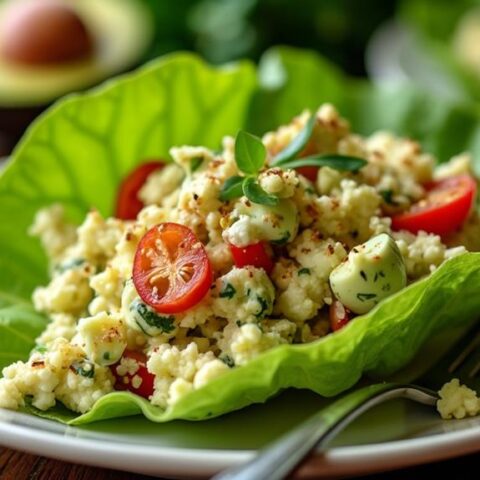

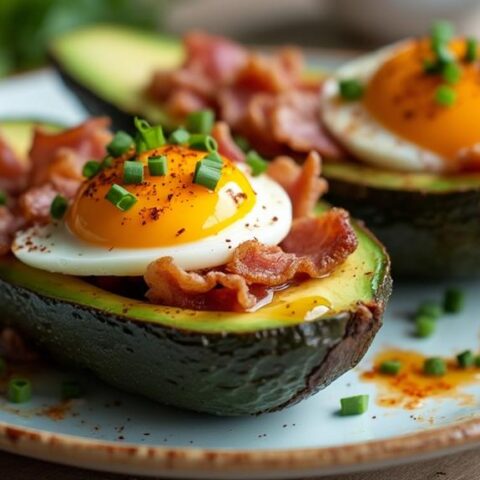
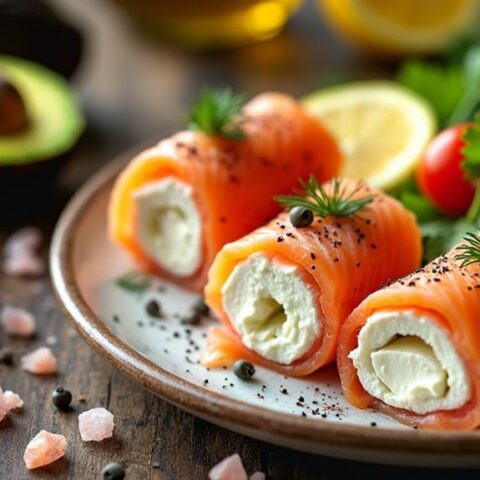
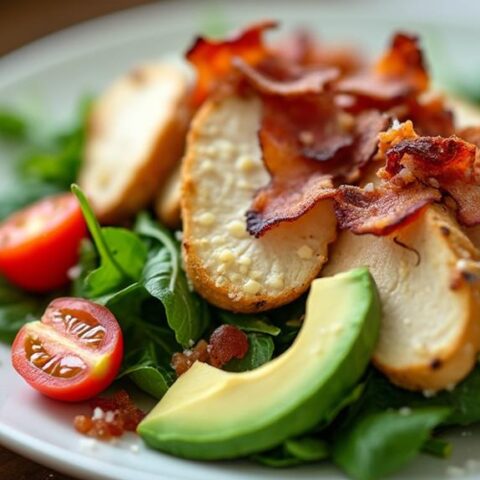
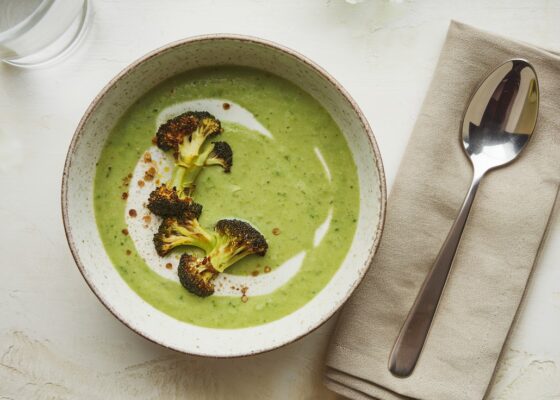



No Comments